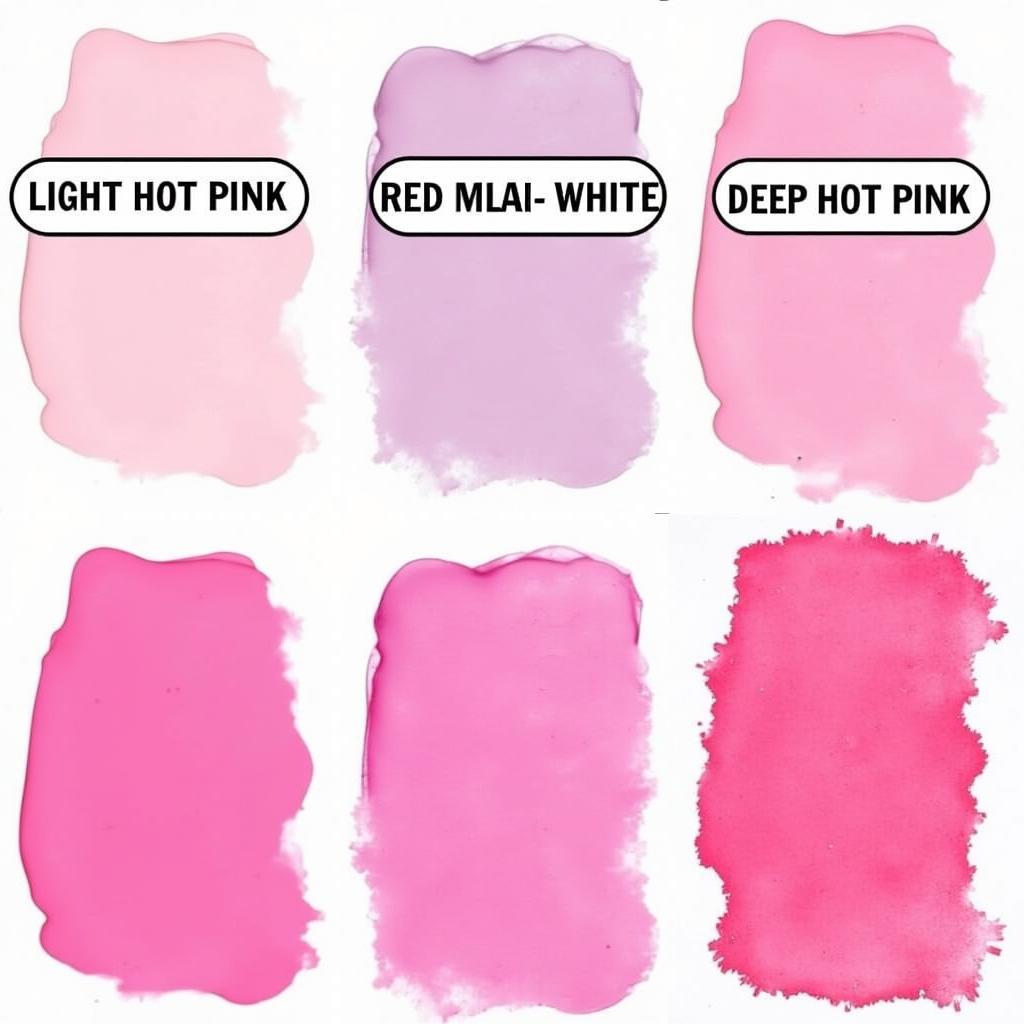Creating vibrant hot pink with food coloring is easier than you think! Whether you’re dyeing frosting for a birthday cake, coloring slime for a fun activity, or adding a pop of color to any DIY project, this guide will show you exactly how to achieve that perfect hot pink hue.
Learning how to make hot pink using food coloring opens up a world of creative possibilities. From baking vibrant desserts to crafting colorful decorations, mastering this simple technique can add a touch of fun to any project. This comprehensive guide will provide you with everything you need to know to create various shades of hot pink, ensuring your creations are always as vibrant as you envision.
Mastering the Art of Mixing Hot Pink Food Coloring
The key to achieving a true hot pink lies in understanding the color wheel. Hot pink is essentially a vibrant shade of pink with a strong reddish-purple undertone. Since red and blue make purple, combining red food coloring with a tiny drop of blue will create the base for your hot pink. The ratio of red to blue will determine the final shade.
- Start with a small amount of red food coloring – this will be your dominant color.
- Add a minuscule drop of blue food coloring. Remember, a little goes a long way!
- Mix thoroughly. Observe the color and adjust accordingly. If the color is too purplish, add a touch more red. If it’s too red, add another tiny drop of blue.
Achieving Different Shades of Hot Pink
Once you’ve mastered the basic technique, you can experiment with different shades of hot pink. For a lighter, pastel hot pink, consider adding a drop or two of white food coloring (if available) or diluting the mixture with a bit of water or the base ingredient you’re coloring. For a deeper, more intense hot pink, simply add more red and blue, keeping the same ratio.
- Light Hot Pink: More white/base ingredient, less red and blue.
- Medium Hot Pink: Balanced ratio of red and blue.
- Deep Hot Pink: More red and blue, less white/base ingredient.
 Variations of Hot Pink Food Coloring Shades
Variations of Hot Pink Food Coloring Shades
Tips and Tricks for Using Food Coloring
Working with food coloring can sometimes be messy. Here are a few tips to make the process smoother:
- Use toothpicks or fine-tipped brushes: For precise control, especially when adding blue.
- Start small and add gradually: It’s always easier to add more color than to remove it.
- Test on a small portion: Before coloring the entire batch, test the color on a small amount to ensure you’re happy with the shade.
- Wear gloves: To avoid staining your hands.
- Mix thoroughly: Ensure the color is evenly distributed.
how to make hot pink color provides a similar approach to achieving the desired color.
Common Mistakes to Avoid
- Adding too much blue: This will result in a purplish color rather than hot pink.
- Not mixing thoroughly: Uneven color distribution can lead to a blotchy appearance.
- Using outdated food coloring: Old food coloring may have lost its vibrancy.
This relates to can you put food coloring in white chocolate in terms of careful color addition.
What Can You Color with Hot Pink Food Coloring?
Hot pink food coloring can be used to color a wide variety of things, such as:
- Frosting and icing: Create vibrant pink cakes and cupcakes.
- Cake batter: Bake a pink cake from the inside out.
- Candy melts: Make colorful candies and decorations.
- Slime: Add a pop of color to your homemade slime.
- Playdough: Create custom-colored playdough.
- Easter eggs: Dye vibrant pink eggs.
how to make the color hot pink offers further insights into creating this vibrant hue.
Just as in what colors make purple icing, understanding color combinations is key to achieving the desired shade.
“Getting that perfect hot pink is all about precision and patience,” says renowned color expert, Anya Sharma. “Start with a small amount of blue and gradually adjust until you achieve the desired vibrancy.”
“Remember, the key is to mix thoroughly,” adds celebrated cake decorator, David Nguyen. “Uneven distribution of color can ruin the final look of your creation.”
In conclusion, making hot pink with food coloring is a simple yet rewarding process. By following these tips and tricks, you can create a vibrant and eye-catching color for any project. Remember to start with a small amount of blue and gradually adjust until you achieve the perfect hot pink hue. how to dye deviled eggs with food coloring provides further information on using food coloring for culinary purposes.
FAQ
- Can I use gel food coloring to make hot pink? Yes, gel food coloring works well and often produces more vibrant colors.
- What if I don’t have blue food coloring? You can try using a very small amount of purple, but this may be more difficult to control.
- Can I use natural food coloring to make hot pink? Achieving a true hot pink with natural food coloring can be challenging. Beet juice can create a pinkish hue, but it may not be as vibrant.
- How do I store leftover hot pink food coloring? Store leftover food coloring in a tightly sealed container in a cool, dark place.
- What if my hot pink is too light? Add more red and blue food coloring in small increments until you reach the desired shade.
- My hot pink is too dark, what can I do? Dilute the mixture with a bit of water or your base ingredient.
- Can I mix different brands of food coloring? It’s best to stick to the same brand for consistent results.
When you need support, please contact Phone Number: 0373298888, Email: [email protected] Or visit us at: 86 Cau Giay, Hanoi. We have a 24/7 customer service team.
